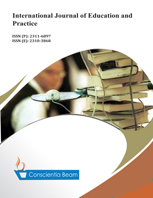A comparative study of teaching strategies in inclusive elementary classrooms in Indonesia, Taiwan, Thailand and the USA
DOI:
https://doi.org/10.18488/61.v11i3.3427Abstract
The teaching strategies for inclusive elementary schools can differ between countries due to a combination of cultural, educational and systemic factors. Understanding these differences is essential for developing effective teaching strategies that meet the diverse needs of all students. Therefore, this study aimed to compare teachers’ teaching strategies in inclusive elementary classrooms in Indonesia, Taiwan, Thailand and the USA. A questionnaire with 14 teaching strategies, designed with five-point options, was administered to collect data. A total of 171 respondents were recruited: 50 each from Indonesia, Taiwan and Thailand, and 21 from the USA. Descriptive statistics, one-way analysis of variance and Tukey’s post hoc test were applied to examine the frequency of teaching strategies and test for any significant differences among the four countries. The results showed that the respondents in the participating countries demonstrated preferences for certain strategies, and significant differences were found among the countries. While the strategies used may differ from country to country, the goal remains the same: to create an inclusive learning environment that meets the needs of all students. Ultimately, inclusive education not only benefits students with disabilities but also contributes to creating a more diverse and inclusive society.





